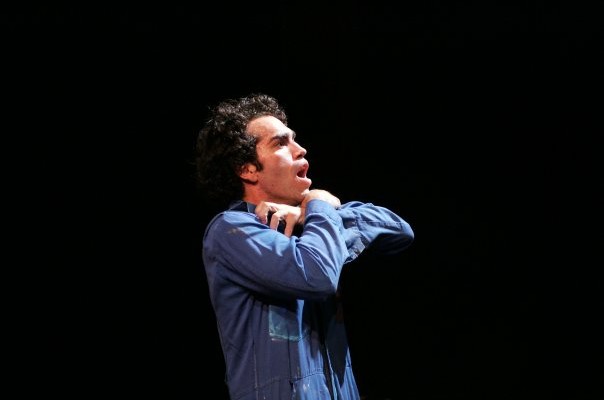From single-session workshops to directing entire productions, I offer a range of Movement Design options.
This role in any production may include the following components (credit for the following list goes to my colleague and fellow Dell’Arte International MFA alum, Kali Quinn. Based in Rhode Island, she offers similar services and is an amazing resource. I highly encourage you to visit her website here.):
- Physical Conditioning: To create a group warm-up that everyone can participate in, strengthening themselves throughout the process.
- Building Ensemble: To encourage physical trust, risk, honesty, and play amongst the actors and the entire company: director, designers, stage managers, etc.
- Constructing a Movement Vocabulary: Taking the actors and director through several physical techniques and methods that give a larger range of movement to choose from, use, and refer to within the rehearsal process. This includes: Laban, Viewpoints, Object Work, and Abstract movement (Logical, Emotional, Spiritual, Physical). This can be tailored to any period or genre (i.e. restoration, Victorian, melodrama, 16mm, etc.)
- Character Physicality: To take actors through a process that helps them to create a physical vocabulary for their characters including: gestures, animal, minimum to maximum emotional range, body leads, etc. Directly relating each character’s physical world to the text. Body shape constantly informs the voice and vice versa.
- Discovering Habitual Tendencies: To point out actors’ physical tendencies in their characters or in relation to the group and allow for a space where actors are eventually able to indicate this for one another. Remembering that these comments are not “about” or criticizing that individual, but rather “for” that individual to stretch their range of possibility.
- Sustainability: To ensure that the actors are creating characters that they can sustain physically without tension. Focusing on breath. Using exercises from Alexander Technique and the Feldenkrais Method.
- Blocking: To have an eye for the special relationship between characters on stage, making sure that space creates a tension/suspension within the arch of the play.
- Movement Sequences: To organically build stage action as needed taking into consideration the overall look and feel of the entire piece. Sometimes this will include choreographic transitions or dance pieces.
- Overall: Consistently using language that encourages company members that physical work is not a separate component of the process, but rather a necessary part of the whole that leads to a more dynamic piece for the audience.

